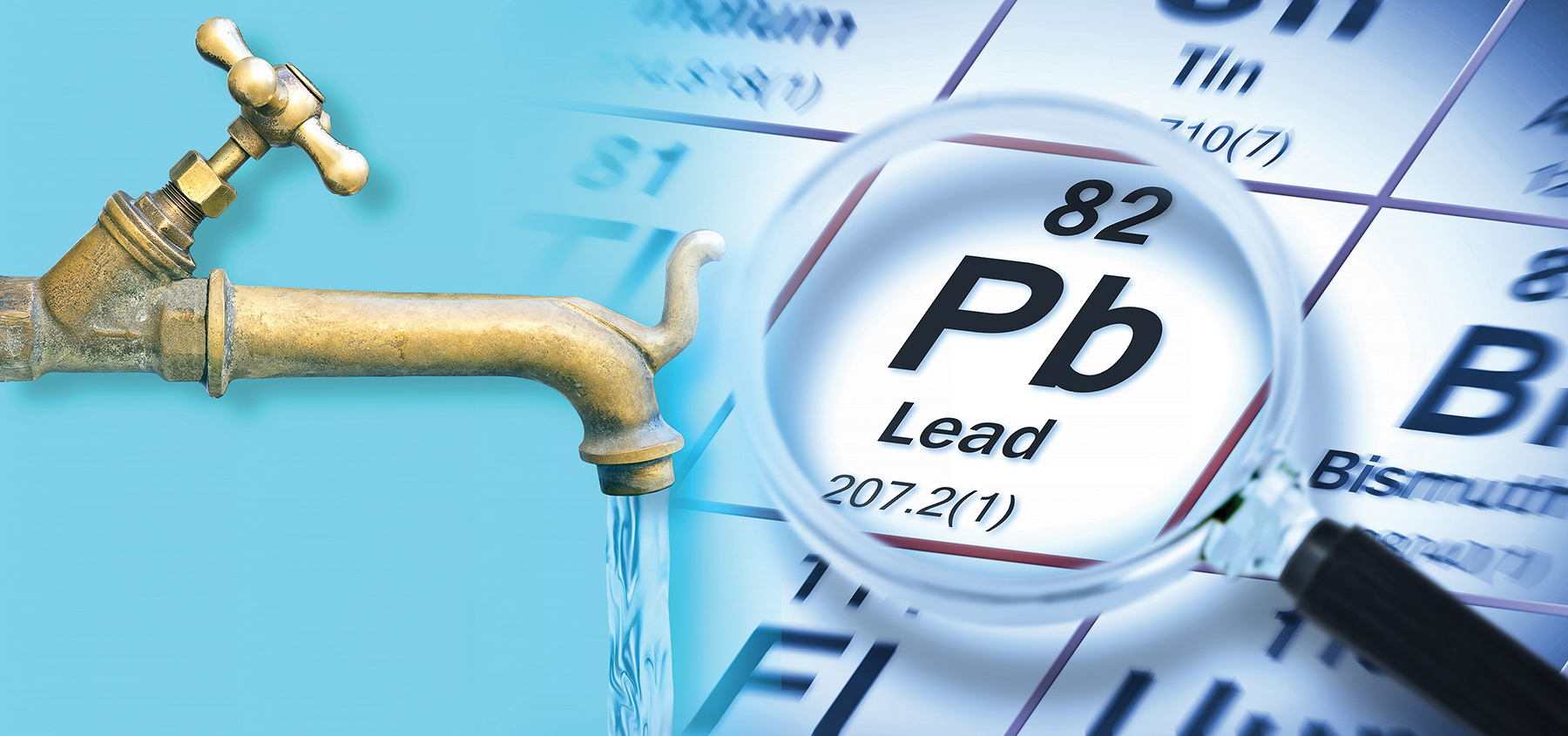High Levels of Lead Exposure Can be Life Threatening
By ISNA Green Initiative Team
May/Jun 2024

Since the Industrial Revolution (1760-1840), lead has been used extensively due to its easy melting and molding properties. Among other uses, it was the material of choice for water transmission in urban areas. Scientists and health professionals’ warnings about the health risks were always ignored.
In 2016, Flint, Mich., made global headlines after it was revealed that its children’s blood-lead levels had nearly doubled since the city started pumping in drinking water from a new source without properly treating it. Even the ancient Romans knew that lead could make you sick. All health experts, including scientists at the Centers for Disease Control and Prevention (“Health Effects of Lead Exposure,” www.cdc.gov/) and the American Academy of Pediatrics, agree that there is no safe level of exposure (“Lead Exposure in Children,” www.aap.org). While it’s toxic to everyone, those at greatest risk for lead poisoning are fetuses, infants and young children because their brains and bodies are rapidly developing and more easily absorb lead than do those of older children and adults. But adults are also at risk, particularly from cardiovascular disease due to lead exposure.
High levels of lead exposure can be serious and life threatening. In children, symptoms of severe lead poisoning include irritability, weight loss, abdominal pain, fatigue, vomiting and seizures. Adults with lead poisoning can experience high blood pressure, joint and muscle pain, difficulty with memory or concentration and harm to reproductive health. Even moderate to low levels of exposure — which might cause subtle symptoms — can produce serious harm, among them hearing loss, anemia, hypertension, kidney impairment, immune system dysfunction and toxicity to the reproductive organs. Low levels of exposure can interfere with thought processes and lower a child’s IQ and cause attention and behavioral problems, all of which affect lifetime learning.
The EPA acknowledges that there is no safe level of lead exposure, and lead that leaches from water pipes and fixtures, especially lead service lines (LSLs), is a major source of dangerous lead exposure nationwide. To address this threat, the Safe Drinking Water Act requires the EPA to specify treatment techniques for controlling lead and copper in drinking water that “would prevent known or anticipated adverse effects on the health of persons to the extent feasible” (www.federalregister.gov/documents). However, for more than three decades, EPA’s Lead and Copper Rule (LCR) of 1991 has proven to be a porous safety net that allows unsafe levels of lead to persist in drinking water systems, resulting in a long string of lead-in-drinking-water crises in many cities and towns, which have fallen hardest on the most vulnerable, particularly children living in lower-wealth communities and communities of color.
The most common sources of lead in drinking water are lead pipes, faucets and plumbing fixtures. Certain pipes that carry drinking water from the water source to the home may contain lead. Household plumbing fixtures, welding solders and pipe fittings made prior to 1986 may also contain lead.
Lead can enter drinking water when a chemical reaction occurs in plumbing materials that contain lead. This is known as corrosion — dissolving or wearing away metal from the pipes and fixtures. This reaction is more severe when water has high acidity or low mineral content. How much lead enters the water is related to its acidity or alkalinity, the types and amounts of minerals it contains, the amount of lead it encounters, its temperature, the amount of wear in the pipes, how long the water stays in pipes and the presence of protective scales or coatings in the pipes.
Steps taken during the last two decades have reduced some exposures to lead in tap water. These steps include actions taken under requirements of the 1986 and 1996 amendments to the Safe Drinking Water Act and the EPA’s Lead and Copper Rule.
Even so, lead in water can come from homes with lead service lines that connect the home to the main water line. Homes without lead service lines may still have brass or chrome-plated brass faucets, galvanized iron pipes or other plumbing soldered with lead. Some drinking water fountains with lead-lined tanks and other plumbing fixtures not intended for drinking water (e.g., lab faucets, hoses, spigots, hand washing sinks) may also have lead in the water.
The EPA has recently embarked on its development of the proposed Lead and Copper Rule Improvements (LCRI) to “protect public health and fully and equitably meet the requirements of the Safe Drinking Water Act” (www.federalregister.gov/documents). We strongly support the LCRI’s stated goal of replacing 100 percent of lead service lines within 10 years. As the EPA notes, where present, LSLs are the predominant source of lead in drinking water. Fully removing these pipes is the most effective and permanent method of reducing their contribution to lead in tap water.
Many large water systems have already removed their lead service lines in less than a decade, and it has been demonstrated to be technically possible and affordable already in multiple cities. Moreover, the EPA has found that lead service line replacement within 10 years is feasible for more than 96 percent of water systems. Therefore, it’s feasible to remove all lead service lines within a decade.
The National Resources Defense Council (NRDC) states, “While some progress has been made over the years, much more still needs to be done. The EPA has estimated that 6 million to 10 million lead service lines are in use across the county. This means that countless families across the country get their water from pipes that are made of a chemical — lead — that can harm them. And these burdens may fall disproportionately on the shoulders of Black, Indigenous, and other people of color” (“Millions Served by Water Systems Detecting Lead,” May 13, 2021, www.nrdc.org).
The EPA’s ground water and drinking water website states, “EPA requires all community water systems to prepare and deliver an annual water quality report called a Consumer Confidence Report (CCR) for their customers by July 1 of each year. Contact your water utility if you’d like to receive a copy of their latest report. If your water comes from a household well or other private water supply, check with your health department, or with any nearby water utilities that use groundwater, for information on contaminants of concern in your area. To learn how to find lead pipes, called service lines, in your home. Protect Your Tap: A quick check for lead is an on-line step by step guide It also provides tips about reducing exposure to lead in drinking water and how to get your water tested for lead and resources to learn more” (www.epa.gov/).
Acknowledgement: EPA ground water and drinking water website (https://www.epa.gov/ground-water-and-drinking-water).
ISNA Green Initiative Team: Huda Alkaff, Saffet Catovic, Nana Firman, Uzma Mirza and Saiyid Masroor Shah (chair)
Tell us what you thought by joining our Facebook community. You can also send comments and story pitches to horizons@isna.net. Islamic Horizons does not publish unsolicited material.
